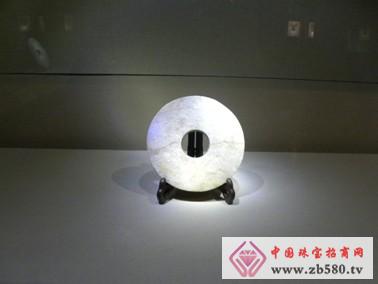
First, there are many kinds of materials used in Liangzhu ancient jade, the most important of which is the tremolite--the nephrite series of nephrite, and the other stones such as fluorite, pyrophyllite, stone marrow and turquoise. The materials of the nephrite series show two different forms depending on the difference in fiber structure, similar to the difference between “Zaiyu†and “mountain material†in Xinjiang and Saitama.
One type is the material that is not subject to translucent lake green after being subjected to “chicken bone whiteâ€. This jade material was used to make jade articles such as enamel, enamel, trigeminal ornaments and Chinese crowns. The other type is dark green that is not opaque, and the five colors are mottled. The fiber structure of the sericite is often seen in the naked eye. This kind of jade has been used in the early days of Liangzhu, mainly used to make the in-plane product. The larger jade, which was also made into jade, was made by the museum. However, the rudeness of the jade crafts made by the museum was obviously lower than that of the first jade.
In the late Liangzhu period, it may be due to the lack of the first jade material, the second type of jade material is commonly used to make high thrift, but the jade material has not changed. There is no pure "chicken bone white" is the most basic feature of Liangzhuyu.
Second, because there is no high-hardness metal tool, the production of Liangzhu jade is completely lazy to stone and some organic tools. The mining situation of the jade material in the Liangzhu era is still unclear, but the cutting method is mainly used for cutting the blank.
On the unearthed Liangzhu, many traces of cutting are left. According to experts' research, there are two types of saw cutting and wire cutting. Saw cutting is a straight cut, while line cutting leaves a parabolic cut. The method of wire cutting is very different from the way in which imitation products are cut with metal cookware. Generally, the wire cut is parabolic cut, and the table marks left after cutting are in the outer arc of the cut.
Some imitations, especially jade, in order to pursue the same as the real thing, also intentionally leave a few cut dents on the surface, but this trace can be clearly seen using metal cookware to grind, dent flat The connection with the surface of the jade is often abrupt, and some even form a step-like table mark with a significant difference in height. It is far less gentle and soft than the dent of the wire cut.
Third, the technology of drilling in Liangzhu era has two kinds of pipe drilling and boring. However, due to the high hardness of jade, the method of double-sided pipe drilling is mainly adopted. The import is large, the diameter of the central communication is small, and sometimes the seam is formed by the stagger. Some of the table marks still have a 1~2 mm wide drill groove. The jade is a large-diameter material, which is also drilled with two-sided pipe. Less material is staggered, and it is carefully polished in the later stage. The perforated wall of the crucible often becomes a smooth micro-arc surface, and the hole wall is completely Straight cockroach. The situation of the bracelet is similar to that of the bracelet. The imitation drills are mostly completed by drilling machines, and large parts such as enamel and enamel are also drilled on both sides of the object, and then repaired and polished, but the traces of the drill holes in the residue are different from the original ones. The perforation of the jade in the imitation product, although expanded by the entrance, polishing and other means, still has the feeling that the hole wall is too straight and stiff. There are fewer repair and polishing holes in the walls of Liangzhuyu and Yuxi, so there are often obvious concentric circular marks in the walls of the holes, and there are often drill grooves on the table formed by the wrong seams.
Fourth, in the Liangzhu era, the hardness of the tool and the jade material is not much different. The fine and complex pattern is actually a lot of effort to draw it out slowly. This method of drawing can't engrave long lines, and the depth can't be consistent. The straight line is still smooth, and the curved lines of the object are distorted and easy to move. Observed with a magnifying glass, the Yinxian line on the Liangzhu jade is repeatedly smashed, and the phenomenon of missing serrations in the edge of the line is very obvious. The imitation jade material has low hardness, and the diamond knife can easily draw the Yinxian line on the surface of the jade material. Therefore, although some imitations are intentionally imitated on the imitation of the jade jade, the chopped object line is repeatedly cut and cut, but always Paradox.
Coveralls typically provide 360-degree protection because they are designed to cover the whole body, including the back and lower legs, and sometimes the head and feet as well. While the material and seam barrier properties are essential for defining the protective level, the coverage provided by the material used in the garment design, as well as certain features including closures, will greatly affect the protective level. HCP unfamiliar with the use of coveralls must be trained and practiced in their use, prior to using during patient care.
protective suit, hazmat suits, disposable coveralls
SUZHOU QIANTENG GARMENTS CO., LTD. , https://www.garmentfactorychina.com